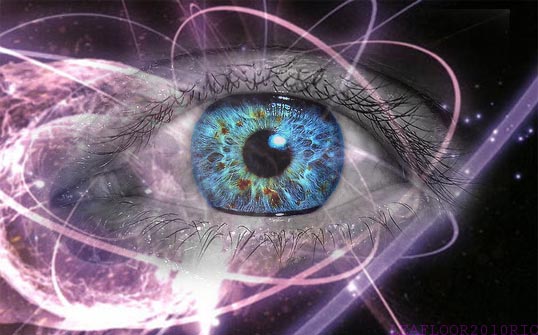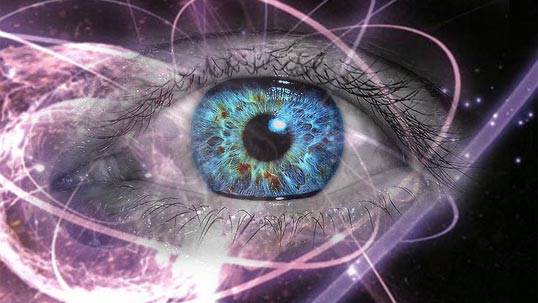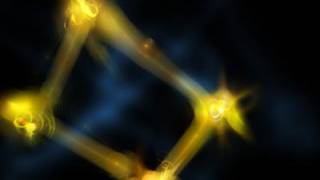How to See Quantum Entanglement
Source: wired.com

Human eyes can detect the spooky phenomenon of quantum entanglement — but only sometimes, a new study on the physics preprint website arXiv.org claims. While eyes can help determine if two individual photons were recently entangled, they can’t tell if the brighter bunch of photons that actually hit the retina are in this bizarre quantum state.
“In general you think these quantum phenomena that involve only a few particles, they’re really far removed from us. That is actually not so true anymore,” said physicist Nicolas Brunner of the University of Bristol. “You could really go to an experiment by just having people look at these photons, and from there really actually see entanglement.”
In an earlier paper, Brunner and colleagues at the University of Geneva in Switzerland sketched out an experiment in which a human observer could replace a standard quantum detector. This isn’t as far-fetched as it sounds, they say, because the eye’s most important job is to be a sensitive photon detector.
The researchers would first prepare two entangled photons — photons whose quantum properties are so intimately linked that one always knows what the other is doing. When an aspect of one photon’s quantum state is measured, the other photon changes in response, even when the two photons are separated by large distances.
The researchers would send one photon to a standard detector and the other to a human observer in a dark room. The human would see a dim point of light in either the right or left field of view, depending on the photon’s quantum state. If those flashes of light correlate strongly enough with the output of the ordinary photon detector, then the scientists can conclude that the photons are entangled.
“This is a standard way of measuring and detecting entanglement,” says physicist Nicolas Gisin of the University of Geneva, a coauthor of the new paper.
There’s just one problem: Humans can’t see individual photons. The retina needs at least seven photons to hit it at once before it sends signals to the brain. Also, 90 percent of photons are lost or scattered on the way through the gelatinous part of the eye to the retina. These restrictions mean that you need a lot of photons — at least hundreds, preferably thousands — to make a practical human quantum detector.
In 2008 a group in Rome found a way to clone an entangled photon that preserves the entanglement. If you treat the big bunch of clones as a single quantum state, the entire bunch is entangled with the other original photon, the researchers claimed.
“It’s like having a Schrodinger’s cat,” says Brunner, referring to Erwin Schrodinger’s famous 1935 thought experiment in which a cat in a box has a 50-50 chance of living or dying depending on whether a radioactive atom decays. In this case, the microscopic state of the atom is entangled with the macroscopic state of the cat: Either the atom decays and the cat is dead, or the atom doesn’t decay and the cat is alive. Until someone opens the box, the only way to describe the system is by including both the atom and the cat.
Gisin and colleagues thought this photon-cloning method would be perfect for their human quantum-detector experiments. All they would have to do is make a few thousand copies of one member of the original entangled photon pair, and send all those copies to the human observer.
But because entanglement is easy to break, the team was unsure if the photons that reach the observer’s eyes would still be entangled with the other photon.
To test this idea, Gisin and colleagues imagined what would happen if instead of cloning the original photon, they made the equivalent of a photocopy. Like a black-and-white Xerox of a color picture, some information about the original photon would be lost. Because the copied photons were never entangled with the original, they would still not be entangled when they reached the observer’s eyes.
The researchers compared the theoretical results using photocopied photons and a real quantum cloner, and found that they looked exactly the same. The human observer would see the same thing, even when the bunch of photons were just Xeroxes that couldn’t possibly be entangled with the other photon.
The group concluded that human eyes can’t see quantum entanglement between a macro-state and a micro-state. Schrodinger’s cat may well be entangled with the atom, but a human detector can’t tell.
But the human eye can reliably tell whether the original two photons were entangled. That’s still “seeing” entanglement, the authors say.
“Macro-micro is almost out of the question. But the micro-micro is nice as well,” said study coauthor Christoph Simon of the University of Calgary in Canada. “You’re bringing the observer a little bit closer to the quantum physics.”
The researchers are now working on ways to perform the experiment in the lab and expect it to be ready within two years.
“The theoretical paper is certainly sound and of good quality,” comments physicist Dirk Bouwmeester of the University of California, Santa Barbara.
But Gisin acknowledges that replacing quantum detectors with eyeballs would not lead to any new applications.
“Why do we do it nevertheless?” he says. “We find entanglement fascinating.”
Article from: Wired.com






















